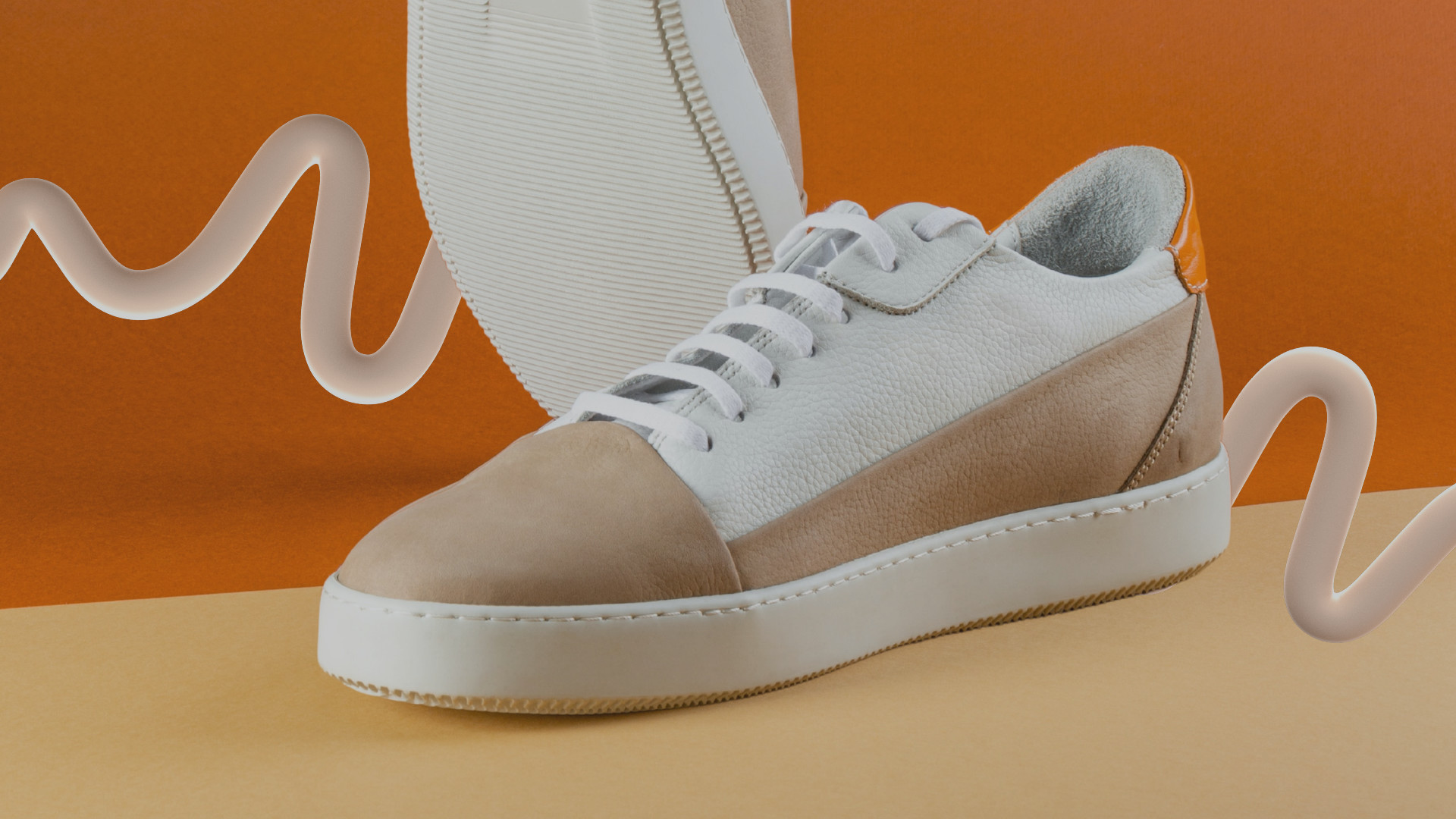
Our Founder & CEO, Mark Harrop, shares his thoughts around 5G and what it means for retail, footwear and apparel. He takes us through the advent of each generation, beginning with 1G, and closes with a vision for the future.
The world’s first mobile phone call was made on April 3 1973, by Martin Cooper, a senior engineer at Motorola. He called a rival telecommunications company and informed them he was speaking via mobile phone. The phone Cooper used – almost unrecognisable as such today – weighed a staggering 1.1kg and measured in at 9×5 inches. This prototype device, offered 30 minutes of talk-time and it took around 10 hours to charge the batteries with a separate charger unit – another heavy weight!

In the mid-1980s I worked for MicroDynamics, an American fashion technology company. I worked up and down the length and breadth of the U.K. as a CAD/CAM/PDM salesman, and needed to stay in constant contact with my secretary and office team whilst on the road for days at a time. One of the advantages of working for an American technology business was that I was one of the early adopters of the (then new) 1G mobile phones. The charger for which I referred to as “my brick”. These first mobile phones used analogue radio waves and offered breakneck speeds (only joking!) of 2.4 kilobytes per second. Back then it was still truly amazing to be travelling around the U.K. discussing new technology and using a first generation mobile phone. And for those of you that don’t know, the G in 1G, 2G etc. does indeed stand for ‘generation’.
The early ‘90s saw the advent of 2G. I couldn’t wait for the leap from the analogue world to digital, with it’s 1000 times faster speeds, offering exciting and new ways of communicating with my team back in the office and of course family and friends. These new options included texting, emailing and even the ability to browse Internet pages with download speeds of 100 kilobytes per second.

Then, on the 29th June 2007 (a date many in our industry will recognise), Apple introduced the new (3G) iPhone, and at the same time released iTunes V7. 3G was yet another 1000 times faster than the previous 2G mobiles, this time offering download speeds of 2 megabytes per second which allowed users to easily browse websites on the Internet, send video clips, take great pictures, use new apps, utilise GPS and much more. We started to use iPhones in the workplace, taking, storing and sharing fashion trend images and videos of existing and new design & development processes, helping to gather trends coming from the fashion capitals around the world. It wasn’t long until we started to see developers working on new fashion related apps as part of the evolving digital technology entering our sector.
4G followed suit and came along in 2009, offering users on the move speeds of 100 megabytes per second. This time, rather than being another 1000 times faster, it was only 100 times faster than 3G, as speeds continue to increase based upon LTE (Long Term Evolution). These speed improvements continue to help the fashion world capture and share videos, products, material images, sounds, text messages, emails, Internet pages, and streaming content whilst on the move. They allow us to keep instantly connected, 24×7, to our businesses and friends, fuelling the not-so-recent trend of working remotely.

So, what’s next in the world of mobile communications and what will it mean to the fashion technology sector? In short, the answer is 5G, and I’m pleased to say that it’s already being tested on new mobile-ready 5G devices and networks. Networks that will offer amazing speeds of up to 1-3 gigabytes per second. To put that into context, this means that you will be able to download a full HD movie in 10 seconds or less. Now, just like 4G, it’s still very early days and will evolve over the next few years, due to the technical infrastructure challenges not only for the mobile devices but also linked to the network that will need to be upgraded and installed everywhere to enable 5G to get to the masses. Here in the U.K. Vodafone (one of the U.K.’s leading mobile operators) will be testing 5G networks in the big cities including Birmingham, Bristol, Cardiff, Glasgow, Liverpool, London and in my home city of Manchester, with trials set to begin between October and December this year.
Vodafone claims this is the most comprehensive 5G trial announced to date, and adds that it will be used to test new 5G applications, including virtual and augmented reality in factories, hospitals and offices.
In advance of these 5G trials, Vodafone’s engineers are already busy laying the groundwork for a 5G network at more than 40 sites in these cities. The trials are part of an ambitious plan that the business has dubbed ‘Gigabit UK’ and which envisions a U.K. where everyone can get speeds of one gigabit (note, not gigabyte) per second or more, wherever they are. It’s a plan that will involve both the launch of a widespread 5G network and upgraded fixed broadband connections. A full commercial launch is planned for 2020, and we are not alone: many other countries are testing and starting to plan for 5G rollouts. So, with only two years to go, the question is: shouldn’t the leading PLM technology providers be paving the way for their customers to be at the forefront of this new revolution?
5G will reduce latency significantly (giving the fashion sector faster up and download times). In short, it will give wireless broadband the capacity it needs to power thousands of connected devices that will truly revolutionise our mobile workplaces.

A Vision for the Mobile Fashion Sector of the Future
So what might 5G help to bring to the world of fashion? I’d like to share some ideas and suggestions for the PLM vendors catering to RFA:
- 3D design and viewing enabled whilst on the move (100mbps – 1+Gbps)
- Hundreds of real-time connections to multiple devices, perfect for bricks and mortar retailers, warehouses, factories and so on
- Fully enabled Augmented and Virtual Reality, fuelled by your own fibre optics in your jeans pocket
- Supply-chain team video conferencing as part of the design and development process via your 5G device
- Digitisation of the end-to-end supply-chains including graphical tracking of samples and production monitoring
- Working with fully functional mobile PLM (platforms) via your mobile device, meaning no need to be in the office to work on each of the platforms
- Virtual assistants will become part of our every day lives, using artificial intelligence and machine learning, removing the mundane tasks that will help to make us all more efficient and allow more time for focus on creative design and new developments
- Video “How To Guides” to become the new manuals as software platforms continue to change ever faster and with less time to write manuals that will soon be out of date
- People will be able to work from any location (CAD, CAM, 2D, 3D, NC-Equipment, A.R., V.R. etc.) without the need to be in the office using powerful desktop computers with high speed networks
- PLM cloud-based platforms to become smarter and much more efficient, brought about by incredible high speeds of uploads and downloads of data coming from a broad range of devices – the likes of IoT and of course your mobiles!
- IoT technologies & devices to become richer (bi-directional comms) across the entire retail supply-chain, making IoT devices easier to deploy in the workplace and easier to maintain without putting too much pressure on available bandwidths.
With 5G will come further innovation and we will see lots of new start-ups, like we did around mobile apps – using the 5G open platform & ecosystem to share and brainstorm new innovative applications and experiences.
According to NASA, with 5G, your mobile phone has more computing power than the computers used for the Apollo 11 moon landing!
Use them wisely.





